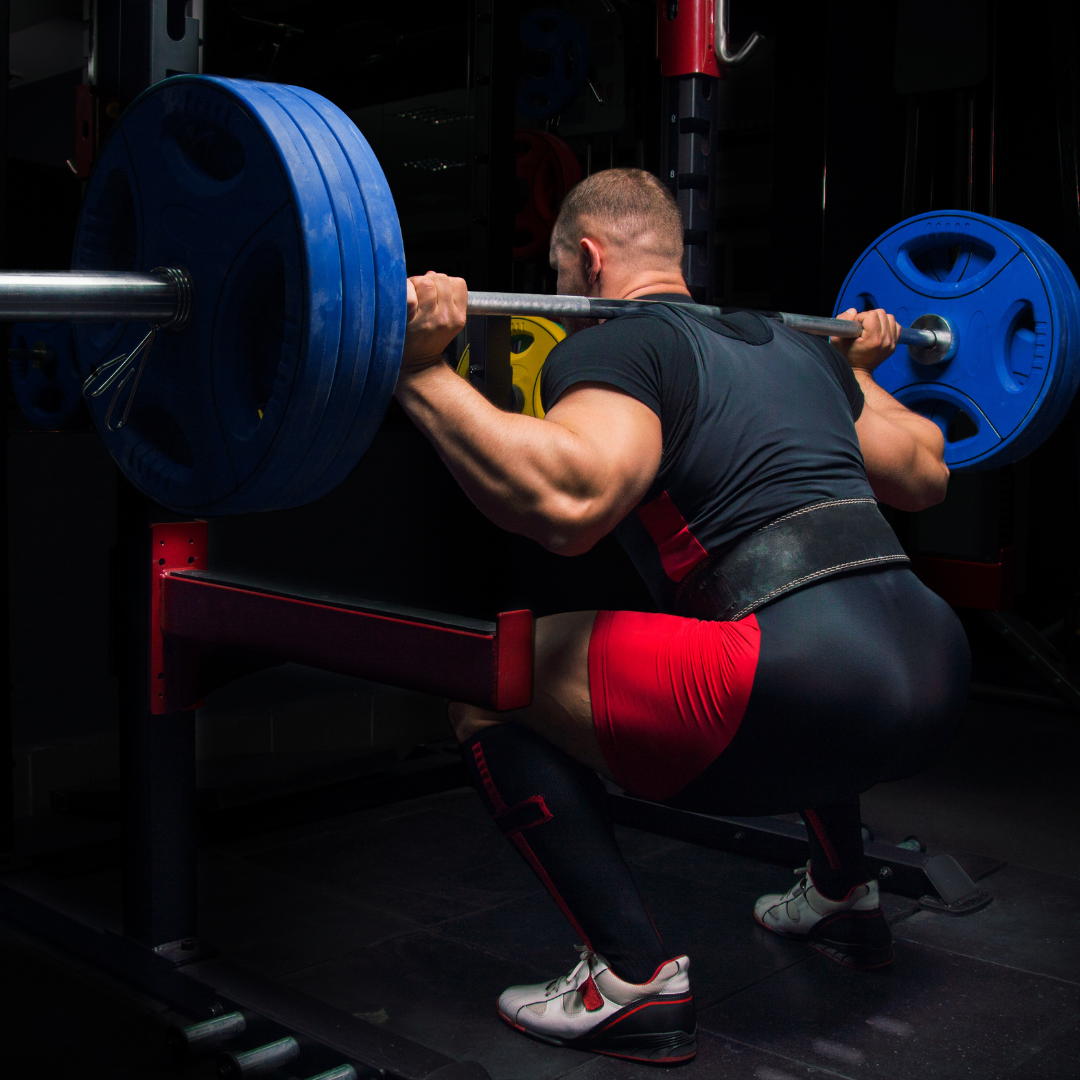Weightlifting is more than just hoisting substantial weights; it's a careful combination of precision, technique, and ensuring one's physical well-being during the process. Weightlifting belts are often used to help in achieving these however, their purpose and merits are frequently misinterpreted.
Looking to shop? Check out our range of Lifting Belts
Understanding the Role of Weightlifting Belts
Weightlifting belts are designed to extend support to the lower back and core while engaging in the lifting of heavy weights. They act as an external bolster, aiding in the augmentation of intra-abdominal pressure and the stabilisation of the spine. This reinforcement can prove particularly vital when executing compound lifts such as squats, deadlifts, and overhead presses.
Benefits of Using Weightlifting Belts
Enhancing Core Stability
A weightlifting belt can be likened to a safety net for your core muscles. It functions to stabilise the spine and the surrounding muscles, enabling you to lift with a more neutral spinal posture. This, in turn, can reduce the risk of injuries and strains, particularly when pushing your physical limits.
Reduce Spinal Stress
Lifting heavy weights can exert substantial strain on the spine. A belt assists in the equitable distribution of this stress, thereby reducing the burden on the lower back. It also serves as a reminder to engage your core muscles, which can prevent excessive arching or rounding of the back.
Improve Lifting Performance
Using a weightlifting belt can potentially elevate your lifting performance. By furnishing supplementary support, you might find that you can manage slightly heavier weights or execute more repetitions while maintaining proper form.
Different Types of Weightlifting Belts
Powerlifting Belts
Powerlifting belts typically possess greater width at the back and narrower dimensions at the front. They provide substantial support and are favored by individuals aspiring to lift maximal weights.
Olympic Weightlifting Belts
Olympic weightlifting belts are more pliable and contoured, permitting a broader range of motion during dynamic lifts such as the clean and jerk or snatch.
Velcro vs. Lever Belts
Weightlifting belts can be fastened using either Velcro or a lever mechanism. Velcro belts offer adjustability, whereas lever belts provide a secure fit with comparatively limited adjustability.
Selecting the Appropriate Belt for You
Determining the Correct Size
Ensure that your belt fits snugly around your waist without constricting. You should be able to comfortably insert a finger between the belt and your body.
Choosing the Optimal Width
The width of the belt hinges on the nature of your lifting activities. Powerlifters typically opt for broader belts, while Olympic lifters favor narrower ones for greater mobility.
Appropriate Belt Application: Do's and Don'ts
Securing the Belt Properly
Position the belt just above your hip bones and fasten it adequately to experience support without constriction. Remember, the belt is a tool to assist, not replace proper technique.
Steering Clear of Overdependence
While belts offer support, they shouldn't evolve into a crutch. It's imperative to continue fortifying your core muscles for sustained progress.
Common Misconceptions Regarding Weightlifting Belts
Diminishing Core Muscles
Wearing a belt doesn't automatically equate to enfeebled core muscles. When employed correctly, belts complement core engagement.
Substituting Proper Technique
A belt cannot rectify poor lifting form. It is not a substitute for acquiring and practicing correct techniques.
Fostering Dependency
When employed judiciously, belts won't induce dependency. They are a tool that can be judiciously integrated into your regimen.
Integrating Belts into Your Workout Regimen
Employing Belts as Training Aids
Incorporate the belt during sessions involving heavier lifts to furnish additional support when it is most advantageous.
Striking a Balance with Belt Usage
Limit belt usage to instances where you approach maximum capacity, while also allowing sessions without it to sustain core strength.
Recommended Lifting Belt
Now that you know more about lifting belts and their benefits, if you're looking for a high quality belt then look no further than our SBD Belts
The 13mm SBD Lever Belt
The classic SBD Belt. A high quality 13mm lever belt featuring a patented gliding lever, providing the adjustability of a prong belt with the ease and tightness of a lever belt.
Ideal for sizing up or down whenever you need during training sessions and competitions. Perfect for beginners or seasoned lifters.
The 10mm SBD Belt
The 10mm lever belt is constructed using two different cuts of hide to allow the belt to retain support while moulding to your waist.
Featuring a low profile buckle - along with rounded edges and corners - to minimise any obstruction or discomfort from contact between the legs and the belt.
Conclusion
Wearing a weightlifting belt isn't a shortcut, nor is it a crutch. It functions as a strategic aid that, when wielded correctly, can contribute to safer and more efficient lifting. Grasping its purpose, advantages, and constraints empowers you to make informed choices concerning its usage.
FAQs about Weightlifting Belts
Is using a weightlifting belt exclusively for advanced lifters? No, weightlifting belts can be advantageous for lifters of varied skill levels, particularly during demanding lifts.
Can a weightlifting belt avoid all types of injuries? While a belt can mitigate the risk of specific injuries by stabilising the spine, it cannot thwart all injuries. Adhering to proper form and technique remains pivotal.
Should I wear a weightlifting belt for every workout? It is not essential. Reserve the utilisation of the belt for lifts that approach your maximum capacity to prevent undue reliance.
Can I rely solely on a weightlifting belt instead of concentrating on my core muscles? No, a belt should complement the engagement of core muscles, not substitute for them. Developing a robust core remains imperative for overall stability.
How do I determine if my weightlifting belt fits correctly? Your belt should fit snugly, yet not constrictively. You should be able to insert a finger comfortably between the belt and your body.







